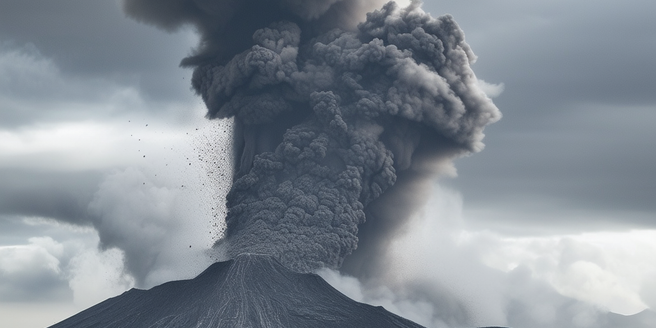
Understanding Volcanic Eruptions
Volcanic eruptions are complex natural phenomena that involve the expulsion of magma, ash, and gases from beneath the Earth’s crust. The process begins deep in the Earth, where intense heat and pressure are generated. When the pressure becomes too great, it forces magma upward, resulting in an eruption. Eruptions vary in scale and intensity, ranging from gentle lava flows to explosive events that eject vast amounts of ash into the atmosphere. The composition of volcanic material, geographical location, and eruption type all influence the impact on surrounding environments. Understanding these factors is crucial for predicting eruptions and mitigating their potential hazards. The study of these events not only helps in forecasting but also offers insights into the planet’s geological history and the dynamic processes that shape it.
How Volcanic Activity Influences Weather
Volcanic activity can have a profound impact on the weather, both short-term and long-term. When a volcano erupts, it releases ash and sulfur dioxide into the atmosphere. These substances can spread over large areas, forming aerosol clouds. These clouds can reflect sunlight, leading to surface cooling, often termed as ‘volcanic winter’. Such cooling can disrupt weather patterns, affecting precipitation and causing anomalies in temperature distribution. The effects on agriculture can be particularly severe, as growing seasons may be shortened or crop yields diminished. The extent of this influence depends on the eruption’s magnitude and duration. Historical eruptions have been linked to altered weather patterns, showcasing volcanic activity as a significant driver of atmospheric change. Understanding this interplay is crucial for grasping how natural events can disrupt climatic norms.
The Science Behind Rainfall Changes Post-Eruption
Rainfall patterns can be significantly altered following a volcanic eruption. The science behind these changes lies in the volcanic emissions, particularly sulfur dioxide, which transform into aerosols that influence cloud formation and precipitation. These aerosols serve as nuclei around which water droplets coalesce, potentially altering rainfall distribution. In fact, recent studies have shown that large volcanic eruptions can impact global climate systems for years. In some cases, they can enhance cloud condensation processes, leading to increased rainfall. Conversely, the cooling effect from aerosols can stabilize atmospheric conditions, reducing rainfall in some areas. Scientists employ climate models to track these changes and predict how volcanic activity could shift regional precipitation, providing crucial data for water resource management and agricultural planning.
Case Studies: Volcanic Eruptions and Their Impact on Rainfall
Historical case studies provide insights into how volcanic eruptions impact rainfall. The 1815 eruption of Mount Tambora, for example, led to the ‘Year Without a Summer’, resulting in drastic climatic anomalies and altered precipitation patterns worldwide. The widespread agricultural failures that followed had lasting socio-economic effects. Similarly, the eruption of Mount Pinatubo in 1991 caused significant atmospheric disturbances that influenced rainfall in parts of Asia and North America. These documented cases serve as reminders of nature’s power to change environmental systems. These events highlight the complex relationship between volcanic activity and hydrological cycles. Analyzing such case studies allows scientists to validate climate models and better predict future impacts, ensuring communities are better prepared for potential disruptions in water supply and agriculture.
Predicting Future Rainfall Patterns in Volcanic Regions
Predicting future rainfall patterns in volcanic regions is both a challenge and necessity, given the potential repercussions on ecosystems and human communities. Advances in satellite technology and climate modeling have enabled more accurate predictions of how volcanic emissions may alter weather systems. Understanding these changes is crucial for maintaining ecological balance and safeguarding human livelihoods. By analyzing data from past eruptions and current climatic conditions, scientists can forecast potential changes in precipitation. These predictions are vital for regions with active volcanoes, aiding in water resource planning and disaster preparedness. Collaboration between volcanologists, meteorologists, and local authorities is essential to develop strategies that mitigate risks associated with altered rainfall due to volcanic activity.
